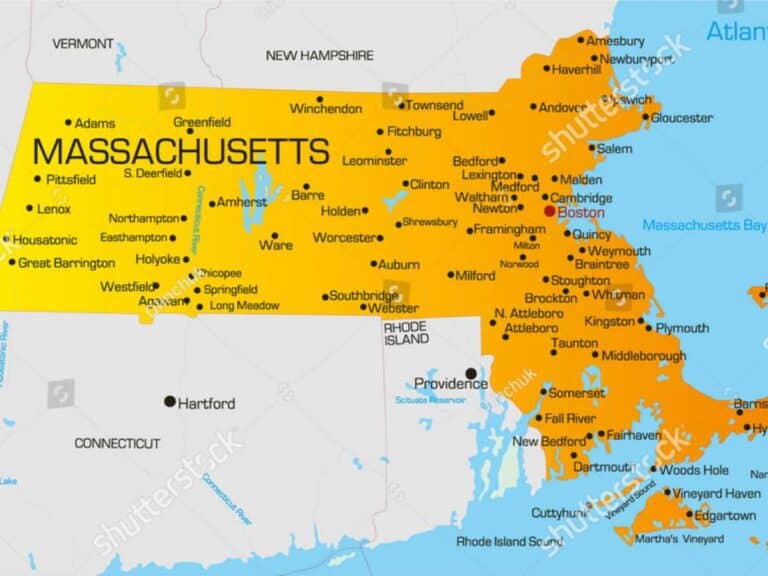How Much is Too Much Saving for College?
Saving for college is hard.
I have three children, and I saved almost nothing for my oldest. The reason was simple, I had no money left after accumulating a downpayment for our first house, contributing for retirement, and paying everyday expenses.
But I am getting better because I firm believer in college worth. I saved a little for my Middleschooler, and I planning to save way more for my infant baby. All because I am earning more now than twenty years ago at the beginning of my career.
However, I often debate how much should I contribute to 529, because there is a common myth that colleges punish savers by reducing their financial aid.
Here’s what I think you should do if you are in the same boat as I am.
Saving for the entire sticker price of a college education is too much. It’s best to follow the one-third rule — a third of the cost should come from past income, the other third of the cost should come from current income, and the final third of the cost should come from future income.

Do College Savings Lower Need-Based Aid?
College savings reduce need-based financial aid. When need-based financial aid is computed, up to 5.64% of the total value of the accumulated college funds is deducted. On the other hand, the penalty for the income of the family per year is much higher, which can be up to 50% of the total amount.
Perhaps you have read somewhere or heard from someone that there is a penalty for college savings in the formulas used for computing financial aid, which is why you might be having second thoughts about saving money.
Well, unfortunately, it’s true — need-based financial aid will be reduced by, at most, 5.64%.
For instance, if your teener filled out the FAFSA and he or she indicated that you have $15,000 worth of college savings, $846 would get deducted, thus leaving you with $14,154 to pay for your adolescent’s college costs.
The penalty for annual family income, meanwhile, is up to 50%!
Related Article: Grants for College Besides the FAFSA
It goes without saying that it’s not how much money you have saved for college that can have a considerable impact on your future accountant, engineer or nurse’s need-based financial aid but how much money the family makes per year. Needless to say, there is no need to fear getting ready for the rainy days.
To illustrate, let’s use two families as an example: Family A and Family B. Both families live in Alabama and consist of four members each — two parents and two kids, only one of whom is about to go to college.
Family A has an annual income of $200,000 and a college fund amounting to $10,000 only.
Meanwhile, Family B has an annual income of $100,000 only, but the amount of college money saved since the birth of the eldest child amounts to $200,000. The college-bound kids of Family A and Family B will attend NYU.
Let’s take a look at NYU’s estimated cost of attendance for the academic year 2021 to 2022:
| EXPENSES | COST |
| Tuition and Fees | $54,880 |
| Room and Board | $19,244 |
| Books and Supplies | $718 |
| Transportation | $1,110 |
| Personal Expenses | $2,790 |
| Total | $78,742 |
As of this writing, the average cost of attendance at a private non-profit four-year institution in the US is $53,217.
Based on the figures above, the cost of attending NYU is almost 68% higher than the cost of attending most other private colleges in the land — naturally, you would want to gear up for that while your child is still a baby.
Using the net price calculator available on the school’s website itself, let’s take a look at the estimated net cost of attending NYU, which means the sticker price minus the financial aid award:
| FAMILY | INCOME | SAVINGS | AID | NET PRICE | CONTRIBUTION |
| A | $200,000 | $10,000 | $17,550 | $61,192 | $54,650 |
| B | $100,000 | $200,000 | $51,950 | $26,792 | $20,250 |
Based on the numbers churned out by NYU’s net price calculator, it’s clear that the amount of money a family makes has an impact that’s far more substantial than the amount of money saved for college.
So, in other words, don’t be afraid to prepare for your little one’s college by saving money for it.
Related Article: How to Get a Full Scholarship to NYU
However, it doesn’t mean that you should save all the money that you can in order to have 100% of your child’s college education costs by the time that he or she is 17 years old. Aim to accumulate the entire sticker price of an entire bachelor’s degree and you might end up getting college sticker shock!
The problem with suffering from college sticker shock is that the overwhelming feeling of having to save money in order to be able to cover all college costs in the future might leave you giving up on saving altogether.
When it comes to saving for college, the good news is that you will really have to save just one-third of the costs — it doesn’t really matter if you are thinking about saving for an in-state public four-year school, an out-of-state four-year public school or a private non-profit four-year school.
When is the Best Time to Start Saving for College?
The best time to save for college, ideally, is when the child is born. The compounding of interest over time gives the money the chance to grow exponentially. Saving for college as soon as the child is born will usually yield enough money to cover about one-third of college costs in the future.
Some parents wait until their little ones enter high school before they prep for college.
As mentioned earlier, the general rule of thumb is that college costs should be considered as costs spread out over time rather than one big lump sum — a third should come from past income, the other third should come from current income, and the final third should come from future income.
Economizing for college is best started the minute your future degree holder is born. This allows you to accumulate enough money by the time he or she is ready to step foot on a college campus, thus fulfilling the one-third rule.
Otherwise, you might find yourself suffering from financial stress when the college application season strikes.
If truth be told, on average, families save only about 10% of all college costs by the time their teeners are building a college list.
While almost 80% of all parentals have saved some cash to help pay for their children’s college, only a little over 25% of them have saved enough to cover the full costs of an undergraduate degree, says a Fox Business report.
Generally speaking, parents who think about sending their kids to an in-state public four-year institution in the future should save at least $250 per month from the time their babies are born.
The minimum amount grows to $450 per month for an out-of-state public four-year institution and $550 per month for a private non-profit four-year institution.
Worry not if you can’t save $250 — let alone $450 or $550 — per month. That’s because you can always kick start the college-saving undertaking with a more modest amount. For many families, putting aside anywhere from $25 to $35 for every $10,000 in college costs from the time they give birth to their kids is more realistic.
The goal is to get the ball rolling and get yourself acclimatized to it. Once you get started, you will find it easier and easier to save money for college with time, thus allowing you to get used to spending less and less every month.
Eventually, you might find saving at least $250 per month a walk in the park!
And things will get more and more trouble-free as your youngster grows. For instance, you can add to your child’s college fund all the money you were previously spending on formula milk (around $1,800 per year), jarred baby food (around $1,560 per year) and diapers (about $960 per year).

How Do Parents Know If They Have Saved Enough?
Parents can have an idea of whether or not they are on the right track by multiplying the age of their children by $3,000 (in-state public four-year school), $5,000 (out-of-state four-year public school) or $7,000 (private non-profit four-year school) and comparing the result with their current funds.
Saving money for college is not enough — you have to make sure that you are saving enough, too.
You can fend off unnecessary stress, anxiety and frustration when it’s time for your adolescent to go to college if you stick to the recommended amount of cash to save per month in relation to the type of degree-granting institution you believe your child would like to attend. Again, that’s:
- $250 per month an in-state public four-year institution
- $450 per month for an out-of-state public four-year institution
- $550 per month for a private non-profit four-year institution
Related Article: Can You Get In-State Tuition After One Year of College?
It’s so much easier to stick to the plan if the cash flow is regular and the expenses are fixed. Alas, while there are fixed expenses, there are also variable expenses.
Fixed expenses are payments you have very little control over. That’s because you are legally obliged to pay them, such as your house mortgage and car loan. While fixed expenses can be a financial challenge for many families to cover, they are predictable as they occur at regular intervals, such as monthly. This makes budgeting easy.
But then there are also variable expenses. Also referred to as discretionary expenses, they are the money you spend on things such as food, clothing and entertainment.
Needless to say, you have control over them — your behavior and decisions can influence variable expenses.
It’s by taking smart choices as far as variable expenses go that you can really prepare for your child’s college. By making informed decisions and tightening the purse strings here and there, the golden rule that a third of college costs should come from past income and another third should come from current income becomes feasible.
Figuring out whether or not you are saving enough for your baby’s future college needs can be done with simple math: all you have to do is multiply your monthly contribution by 12 and then multiply the resulting number to the current age of your child. It’s not an exact science, but it makes saving for college a no-brainer.
Here are the formulas to use the next time you want to track your progress:
- Child’s age x $3,000 ($250 per month)
- Child’s age x $5,000 ($450 per month)
- Child’s age x $7,000 ($550 per month)
The goal is to have $51,000 (if attending an in-state public four-year school), $85,000 (if going to an out-of-state public four-year school) or $119,000 (if enrolling at a private non-profit four-year institution) by the time your child turns 17 years old and is ready to take on the challenges of earning an undergraduate degree.
Related Article: How To Pay for College With High Income
How Can Parents Save for College?
One way for parents to save money for college is by using college saving plans, such as the 529 plan. Getting a Coverdell education savings account (Coverdell ESA) or a UGMA or UTMA is an option, too. Using a Roth IRA or opening a traditional savings account may work better for some parents.
By now, we have established the fact that it’s never too early for parents to start saving for college — to build a solid college fund, start as soon as your child is born.
Earlier, we talked about how much you should save. And now, let’s talk about how you can save.
It’s a good thing that there are many different options available for parents who wish to begin preparing for the college of their kids way before their little ones learned how to walk or talk. Picking one from the handful of choices is all about deciding which one suits your needs and preferences the most by considering the pros and cons.
Here are some of the college savings vehicles that you might want to consider:
529 plan
This is my favorite college saving option. 529 plan allows families to set aside money specifically for paying college-related costs.
Two of the nicest things about a 529 plan are there are no income level limits and it can be used in any state — you can use it at eligible institutions ranging from trade schools, community colleges to four-year institutions. And by the way, just about any US citizen who is at least 18 years of age can open a 529 account.
However, the money in a 529 plan must be used for college expenses. Otherwise, any non-qualified withdrawals will have the holder of the plan penalized 10% each time.
You can invest in a 529 plan in your state or any other state. How do you decide which one is the best? I am investing in my state plan because they offer tax deductions. If your state does not offer the same, then choose the one with the lowest maintenance fee, either in state or out.

Roth IRA
The primary reason for having a Roth IRA is not to fund a child’s college education but help a parent retire. Still, it can be used to pay for college — as a matter of fact, unlike a 529 plan that will penalize you for withdrawing cash for reasons other than college, a Roth IRA has no penalty whatsoever.
What’s more, a Roth IRA is not considered an asset on the FAFSA. So, in other words, using money from it will not have a negative impact on your child’s chances of getting financial aid.
But a Roth IRA comes with some downsides, too, and leading the list is that it has contribution limits.
When I had only one child, I was contributing to Roth and was telling myself that if I get richer, I can Roth to pay for college and use other resources for retirement.
What I want to say is that if you have only enough money to contribute to retirement and very little for your child’s education, take care of yourself first. You can always borrow for college, but never for retirement.
Coverdell ESA
Formerly referred to as an education IRA, a Coverdell ESA is a trust account created by the US government in order to help families in funding educational expenses for kids who, when the educational savings account is established, must be 18 years old or younger. The age restriction, however, may be waived in certain circumstances.
At the federal level, withdrawals used for the beneficiary’s qualified educational costs are completely tax-free. The Coverdell ESA owner also has the freedom to choose the investments he or she would like to put in the account.
However, there are a few downsides to using a Coverdell ESA to prepare for your little one’s college. For one, you can contribute a maximum of only $2,000 per year — your ability to contribute will depend on your income. Also, the account has to be closed after the beneficiary reaches age 30, unless he or she has special needs.
UGMA/UTMA
An account established under either the Uniform Gift to Minors Act (UGMA) or Uniform Transfers to Minors Act (UTMA) does not provide the tax benefits of a 529 plan. However, it allows the account holder plenty of discretion in where he or she invests the money and how he or she chooses to use it eventually.
While a UGMA or UTMA account is to be used for the child’s benefit, it’s not exclusive for use for college-related costs, which is a good thing for a parent who isn’t sure whether or not his or her child will actually attend college.
But keep in mind that a UGMA or UTMA account is considered an asset belonging to the child. Needless to say, it can affect his or her financial aid eligibility — and instead of 5.64%, the penalty can be up to 20%. And while there is a contribution limit, the maximum contribution per year can range from $15,000 to $30,000.
Regular savings account
If you feel that the college savings methods we have talked about thus far are too complicated, there is an option that you might find simple and straightforward: opening a good old-fashioned savings account.
Whether you prefer to open a savings account at a bank or credit union, you can rest assured that you will be able to use the money for your child’s college education even if the institution fails — banks and credit unions are guaranteed by the Federal Deposit Insurance Corporation (FDIC) and the National Credit Union Federation (NCUF), respectively.
Besides being out of harm’s way, your money will grow by about 2% per year. But there are a couple of downsides to keep in mind. First, the FAFSA considers savings account an asset, which means that it can impact financial aid unfavorably. Second, it’s easy to withdraw money for whatever spending purpose.
Just Before You Start Saving for College
A dollar you save for your child’s college education is a dollar less you will have to borrow when it’s time for him or her to work on a degree. And the sooner you start saving a dollar each time, preferably the moment your future college student is born, the better it is for your peace of mind and pocket, too.
But it doesn’t mean that you have to save for the entire sticker price of college. By following the one-third rule mentioned above, saving for college doesn’t have to be burdensome and overwhelming.
Oh, and scrap the idea, too, that saving for college harm need-based financial aid.
Related Article: Does Applying for Financial Aid Hurt Your Chances of Admissions?
Disclaimer: The views and opinions expressed in this article are those of the authors and do not necessarily represent those of the College Reality Check.





